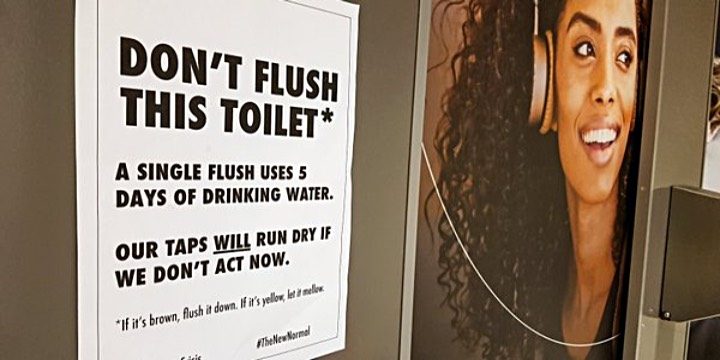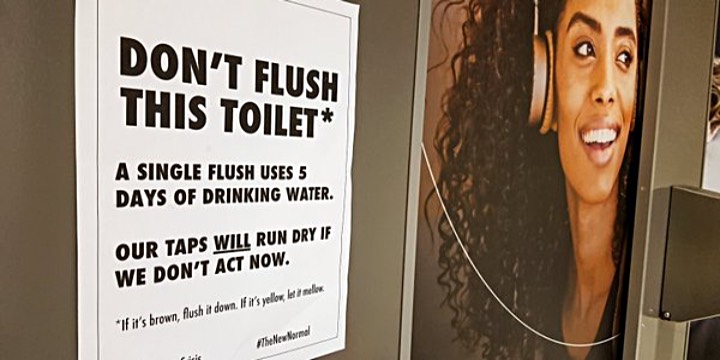Near the conclusion of the 1982 hit recording, “The Girl is Mine” — a duet featuring Michael Jackson and Paul McCartney, each claiming to own the heart of the same woman — the two singers exchange a snippet of spoken dialogue.
McCartney, in an earnest voice: “Michael, we’re not going to fight about this, okay?”
Jackson, laughing: “Paul, I think I told you, I’m a lover, not a fighter!”
The song is a cute fairytale. But in fact, we do have the ability to find solutions to certain conflicts without resorting to violence. And the ‘shortage of water’ in the American West is surely one of them. Right?
In a 2015 article posted on The Tower Magazine website, writer David Hazony referenced a 2012 report released by the US Office of the Director of National Intelligence with a jarringly simple title: “Global Water Security.” The report painted an ominous picture of the future: decreased rainfall, depletion of groundwater, water contamination, and wasteful policies.
The report predicted that all of these challenges would soon combine with increased water usage to create a perfect storm. The report listed the following “Key Judgments”:
During the next 10 years, many countries important to the United States will experience water problems — shortages, poor water quality, or floods — that will risk instability and state failure, increase regional tensions, and distract them from working with the United States on important US policy objectives…
Between now and 2040, fresh water availability will not keep up with demand, absent more effective management of water resources…
Looking deeper into the report, these predictions turn out to be understatements. More than half the earth will soon be facing shortages. A set of maps provided by the National Intelligence Council showed that, by 2025, parts of the world whose water supplies will be “severely,” “extremely,” or “exceptionally” affected include the entire western half of the United States… the whole of India, and about three-quarters of China. A decade from now, billions of people will face a severe crisis if nothing is done.
A recipe for ‘instability and state failure.’ If nothing is done, by 2025.
In this editorial series, we’ve looked briefly at what the “western half of the United States” has been doing over the past few years to address this (apparent) crisis. The state of Colorado published its Colorado Water Plan in 2015, suggesting that a huge number of water projects are already “in the works” — despite minimal funding by the state government.
Only one-tenth of 1 percent of the state’s budget goes toward natural resources, including loans for water projects. While we estimate $20 billion in financial need in the areas of water supply, water infrastructure, recreation, and the environment over the next 30 years, water providers have plans in place to meet much of this need…
The Statewide Water Supply Initiative (SWSI) estimated that by 2050, municipal and industrial water infrastructure improvements in Colorado will require between $17 billion and $19 billion in funding. In addition, approximately $150,000 is needed per mile of stream for smaller-scale river restoration work, but substantial structural changes or channel reconfiguration could cost $240,000 or even $500,000 per mile. (Those estimates might be almost a decade old. The most recent SWSI report I could find on the Colorado Water Conservation Board website was dated 2010.)
For the 2019-20 fiscal year, I understand the Colorado General Assembly has allocated about $17 million, from severance taxes and from the General Fund, to finance Colorado Water Plan efforts. If that were going to be the only ongoing source of revenue for the $17 billion in water projects estimated by SWSI, it would take 1,000 years to fully finance the effort, at this year’s annual rate.
But maybe an underfunded effort to further dam and divert the Colorado River and its tributaries is totally unnecessary? Maybe we don’t really need to fight about water, here in the West.
Maybe… this is a manufactured crisis.
In Part Six, I shared my calculation that, back in 2003, Archuleta County residents — the ordinary folk who don’t operate irrigated ranches or golf courses — were buying an average of about 107 gallons per person per day from Pagosa Area Water and Sanitation District (PAWSD). A total of about 367,000 gallons were sold that year for use by 11,000 residents and who-knows-how-many tourists.
107 gallons per day, per person. Not counting the water consumed by the golf course and the numerous irrigated ranches in the County.
According to the website GlobalCitizen.org, the city of Cape Town, South Africa Cape Town, South Africa, is poised, within the next couple of months, to become the world’s first major city to run out of drinking water — unless residents and businesses continue taking steps to reduce their water consumption.

The region has suffered a serious three-year drought that threatens to continue, and the municipal government has chosen May 11, 2019 as “Day Zero” — the date when drinking water deliveries to homes and non-essential businesses will be shut off. Residents are currently asked to ration themselves 13 gallons per day per person. Two 90-second showers per week. Don’t flush the toilet unless necessary. But drink all the water you need to keep hydrated; use as much water as you need, for cooking.
In an effort to limit water use among residents, the municipal government earlier this year mandated that residents use no more than an 87 liters per day (about 22 gallons). But residents failed to heed the rationing guidelines, and the water supply stored in Cape Town’s several reservoirs continued to dwindle. In response, the municipal government has now reduced the daily ration to 50 liters — about 13 gallons.
We understand that these government measures are relatively draconian, and I suppose those of us living along the San Juan River, using 100 or so gallons per day, can hardly imagine living on just 13 gallons per day.
But could we imagine living on 50 gallons per day? That is, could we cut our water use in half, and still be comfortable? Using four times what the people in Cape Town are currently getting by with?
Because, if the American West could cut its water consumption in half, we would have twice as much water to go around.
And we have evidence that this type of radical improvement in water conservation is not only possible — it’s normal in some countries.

